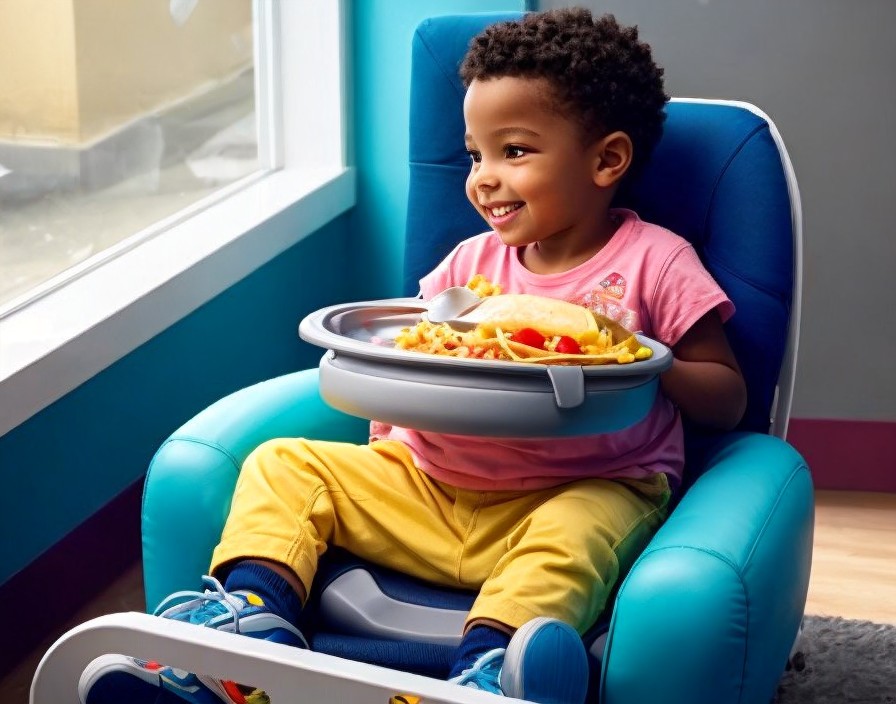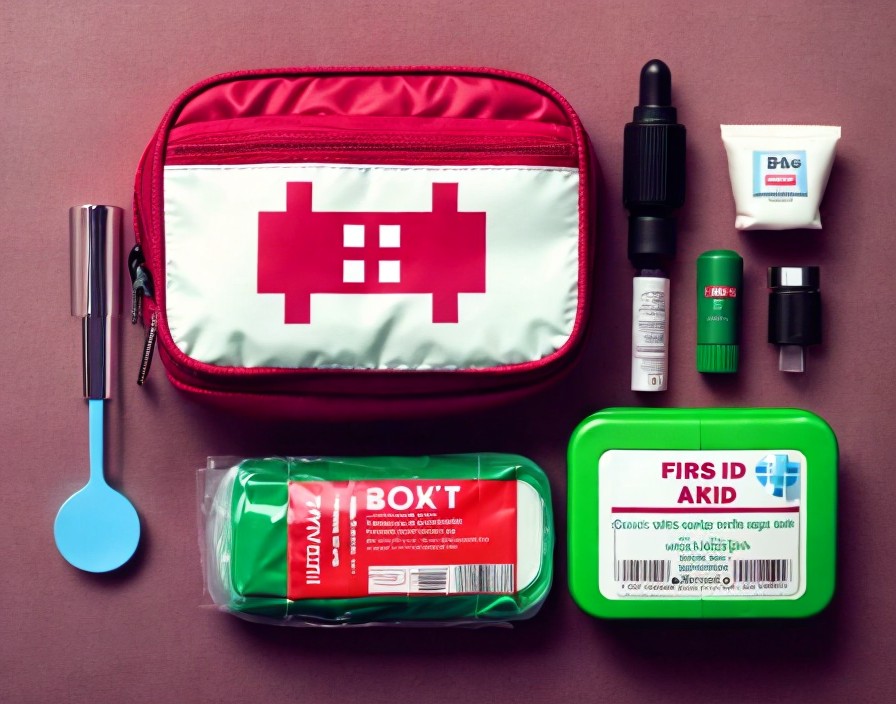
Introduction:
In the wondrous journey of motherhood, the bond between a mother and her baby is both profound and sacred. It’s a connection that begins even before the baby’s first cry, a silent conversation of love and comfort that starts within the womb. This blog delves into the science of this early bonding, exploring how prenatal interactions like talking, singing, and even gentle touches can not only strengthen the mother-baby connection but also lay a foundation for the child’s future emotional and cognitive development.
Section 1: The Beginning of Bonding – Prenatal Connections
Understanding Prenatal Bonding:
The journey of bonding between a mother and her baby begins long before birth. This prenatal period is a critical time for emotional and psychological development for the baby. The environment provided by the mother, including her emotional state, her voice, and her physical touch, begins to shape the baby’s understanding of the world.
The Role of Sounds:
From around the 18th week of pregnancy, a baby in the womb can start to hear sounds. Among these sounds, the mother’s voice is distinct and easily recognizable.
- Talking to the Baby: Simply talking to your baby can be incredibly beneficial. Regularly speaking to your unborn child helps them become familiar with your voice, which can be soothing and comforting.
- Singing to the Baby: Singing lullabies or any song you love is not just a way to bond; it’s also a way to stimulate your baby’s auditory development. The rhythm and melody of songs can be calming and enjoyable for the baby.
- Reading Aloud: This can be an enjoyable routine. Reading your favorite books aloud to your unborn baby introduces them to the rhythms and patterns of speech.
Physical Interactions:
The bond is also nurtured through physical interactions. Although the baby is separated from the outside world by the womb, they can still perceive and respond to touch.
- Gentle Strokes and Massages: Gently massaging your belly can be a way to connect with your baby. Many mothers feel their baby respond with gentle kicks or movements.
- Yoga and Exercise: Engaging in prenatal yoga or gentle exercises can also be a form of bonding. These activities promote maternal well-being and can create a sense of harmony and connection with the baby.
This early phase of bonding is a magical time of connection and growth. By engaging in these simple yet profound activities, expectant mothers can start forming a deep, lasting bond with their babies, setting the stage for a lifelong loving relationship. Stay tuned for our next section, where we delve into the fascinating world of hormones and their role in the bonding process.
Section 2: Hormonal Symphony – The Biochemistry of Bonding
The bonding process between a mother and her unborn child is not just emotional but also deeply rooted in biology. This intricate dance of hormones plays a critical role in nurturing the prenatal connection.
Oxytocin – The Love Hormone:
At the heart of this bonding process lies oxytocin, often referred to as the ‘love hormone.’ This hormone, known for its role in social bonding and maternal behaviors, surges during pregnancy and childbirth.
- Facilitating Emotional Connection: Oxytocin enhances feelings of love, trust, and attachment. During pregnancy, higher levels of oxytocin help establish a strong emotional bond between the mother and her baby.
- Preparation for Childbirth and Nursing: Oxytocin also plays a vital role in childbirth and breastfeeding. It helps in labor and facilitates the ‘let-down’ reflex necessary for breastfeeding, further strengthening the mother-baby bond.
Cortisol and Stress Management:
While oxytocin fosters bonding, cortisol, the stress hormone, can have contrasting effects. Excessive stress during pregnancy may lead to elevated levels of cortisol, which can impact the fetal environment.
- Effects of High Stress: Chronic high stress can potentially affect the baby’s development. It’s essential to find effective stress-management techniques during pregnancy.
- Balancing Stress: Techniques like meditation, prenatal yoga, and mindfulness can help regulate cortisol levels, thereby promoting a healthier emotional state for both the mother and the baby.
Other Hormonal Influences:
Pregnancy is a time of significant hormonal changes that can affect a mother’s mood and emotions. Hormones like estrogen and progesterone also fluctuate, influencing mood and emotional well-being.
- Navigating Hormonal Changes: Understanding these hormonal shifts can help expectant mothers manage their emotional health better. It’s crucial to maintain open communication with healthcare providers about any emotional changes experienced during pregnancy.
The symphony of hormones during pregnancy not only prepares the mother’s body for childbirth and nursing but also intricately weaves the initial threads of emotional connection with the unborn child. In our next section, we’ll explore how this bond strengthens and evolves in the postnatal phase, where physical and direct interactions begin to play a more prominent role.
Section 3: Strengthening the Bond – Postnatal Attachment
The birth of a baby marks the beginning of a new chapter in the bonding journey. This postnatal period is crucial for deepening the connection that began during pregnancy, now with more direct and physical interactions.
First Touch – Skin-to-Skin Contact:
Immediately after birth, skin-to-skin contact can have a profound impact on both the mother and the baby. This practice, also known as kangaroo care, involves placing the naked baby on the mother’s bare chest.
- Physical and Emotional Benefits: This contact helps regulate the baby’s body temperature, heart rate, and breathing. It also encourages the release of oxytocin in the mother, enhancing the feeling of attachment and bonding.
- Facilitating Breastfeeding: Skin-to-skin contact can also make the first breastfeeding experience smoother. It helps the baby instinctively find the breast and start feeding, an essential step in the bonding process.
Breastfeeding and Bonding:
Breastfeeding is more than a way to nourish the baby; it’s a powerful bonding experience. The physical closeness, eye contact, and touch during breastfeeding reinforce the connection established during pregnancy.
- Hormonal Response: Breastfeeding continues the cycle of oxytocin release, which not only aids in milk production but also strengthens the emotional bond.
- Understanding Challenges: It’s important to acknowledge that breastfeeding can be challenging for some mothers. Seeking support from lactation consultants can be invaluable in these cases.
Responsive Caregiving:
Bonding continues to grow through responsive caregiving. Attending to the baby’s needs, whether it’s feeding, comforting, or changing diapers, helps the baby develop trust and a sense of security.
- Learning Baby’s Cues: Understanding and responding to the baby’s cues is a crucial part of bonding. Each cry, giggle, or movement is a form of communication that strengthens the connection.
- The Role of Partners and Family: Bonding is not exclusive to the mother. Partners and other family members play a significant role in the baby’s emotional development. Their involvement in caregiving and interaction enriches the bonding experience for the baby.
The postnatal period is a transformative time where the bond between mother and baby becomes more tangible and dynamic. In the next section, we will explore the long-term implications of these early bonding experiences and how they shape the child’s future emotional and social development.
Section 4: The Lifelong Impact of Early Bonding
The initial bonding experiences between a mother and her baby lay the groundwork for the child’s future emotional, social, and cognitive development. This early connection is not just about immediate comfort and security; it has far-reaching implications that extend well into a child’s life.
Emotional and Social Development:
The quality of early bonding experiences plays a critical role in shaping a child’s emotional landscape.
- Foundation for Trust and Security: A strong early bond creates a sense of trust and security in the child. It forms the basis for how they perceive and interact with the world around them.
- Impact on Emotional Regulation: Children who have established secure attachments early in life tend to have better emotional regulation skills. They are often more resilient in the face of stress and adapt more easily to new situations.
- Social Skills and Relationships: Early bonding influences a child’s ability to form healthy relationships later in life. Securely attached children usually find it easier to develop friendships and social connections.
Cognitive Development:
The benefits of early bonding extend beyond emotional well-being to influence cognitive development.
- Language and Learning: Interaction through talking, singing, and reading during the early stages can stimulate language development and cognitive skills.
- School Readiness: Children with secure early attachments often show higher levels of school readiness, with better attention, curiosity, and problem-solving skills.
The Role of Parental Sensitivity:
A key component of successful early bonding is parental sensitivity – the ability to perceive and respond appropriately to a child’s needs.
- Adapting to Baby’s Cues: Being sensitive to a baby’s cues and responding with warmth and consistency strengthens the bond and contributes to a child’s overall development.
- Long-term Mental Health: Secure attachments in early life are linked to better mental health outcomes. Children with strong early bonds typically have lower risks of developing mental health issues later in life.
The impact of the early mother-baby bonding process is profound and enduring, influencing various aspects of a child’s life. In the final section of our blog post, we will provide practical tips and strategies for nurturing this crucial bond, both during pregnancy and after childbirth.
Section 5: Nurturing the Bond – Tips for New Parents
Cultivating a strong emotional bond with your baby is a journey that begins in pregnancy and continues well into the early years of parenthood. Here are some practical tips and strategies to help new parents nurture this vital connection.
Practical Tips for Prenatal Bonding:
- Regular Communication: Talk, read, or sing to your baby daily. This regular interaction helps the baby recognize your voice and creates a sense of familiarity.
- Mindful Touch: Gentle massages and strokes on your belly can encourage interaction from your baby, like kicks or movements in response.
- Emotional Well-being: Take care of your mental health. Stress management, relaxation techniques, and maintaining a positive outlook can positively impact your baby’s development.
Postnatal Bonding Strategies:
- Maximize Skin-to-Skin Contact: After birth, engage in as much skin-to-skin contact as possible. It not only strengthens the bond but also provides numerous health benefits for the baby.
- Responsive Feeding: Whether breastfeeding or bottle-feeding, use feeding times as opportunities for bonding. Maintain eye contact and engage in gentle talks or songs during feeds.
- Quality Time: Dedicate time every day to interact with your baby, free from distractions. Play, cuddle, and enjoy these moments of connection.
Seeking Support:
- Professional Help: If you’re struggling with bonding or facing challenges in managing postpartum emotions, don’t hesitate to seek help from healthcare professionals.
- Community and Social Support: Join parenting groups or forums. Sharing experiences and tips with other parents can provide valuable insights and emotional support.
- Involve Family Members: Encourage partners and other family members to actively participate in caregiving and bonding activities. This not only supports the baby’s social development but also offers you some much-needed support.
Creating a Nurturing Environment:
- Peaceful Home Setting: Create a calm and soothing environment at home. This can be through soft lighting, gentle music, or a comfortable space for you and your baby to relax.
- Routine and Consistency: Establishing a routine can provide a sense of predictability and security for your baby. Consistent routines around bedtime or playtime help in building trust and a sense of safety.
Encouraging Development Through Play:
- Interactive Play: Engage in age-appropriate, interactive play activities. This can include baby massages, gentle tickles, or simple games like peek-a-boo.
- Sensory Experiences: Offer varied sensory experiences like different textures or soft sounds. These activities aid in cognitive and sensory development.
The journey of building a deep and enduring bond with your baby is filled with unique challenges and joys. By integrating these tips into your daily life, you can foster a nurturing and loving environment that supports your baby’s emotional and developmental needs. Remember, each bonding experience is special, and every small interaction counts in building a lifetime of love and trust.
Conclusion: Embracing the Emotional Journey of Parenthood
As we reach the conclusion of our exploration into the intricate world of early bonding between mother and baby, it becomes evident that this connection is a cornerstone of childhood development and a profound journey of emotional growth for parents.
The Essence of Early Bonding:
- A Foundation for Life: The initial bond between a mother and her baby sets the tone for the child’s future emotional and social landscape. It is a powerful foundation upon which a child builds their understanding of love, trust, and security.
- A Transformative Experience: For parents, the process of bonding with their baby is transformative. It deepens the understanding of unconditional love and nurtures a sense of immense responsibility and connection.
The Significance of Each Moment:
- Cherishing Every Interaction: Every moment spent talking, singing, touching, and playing with your baby contributes significantly to their emotional and cognitive development. These moments are precious and form the building blocks of a lifelong relationship.
- The Role of Patience and Understanding: Bonding is a process that unfolds over time. It requires patience, empathy, and understanding, especially during challenging phases like sleepless nights or the baby’s developmental leaps.
Support and Self-Care:
- Seeking and Offering Support: The journey of parenthood is enriched by the support of partners, family, friends, and professionals. Don’t hesitate to seek help and offer support to others on a similar journey.
- Prioritizing Self-Care: Parental well-being is crucial for healthy bonding. Taking care of your physical, emotional, and mental health is essential for being fully present and responsive to your baby’s needs.
Embracing the Journey:
- A Lifelong Bond: The bond with your child is an evolving relationship that grows and deepens over time. Embrace each stage of this journey with love, presence, and mindfulness.
- Celebrating the Uniqueness: Every parent-baby bond is unique. Celebrate and honor the uniqueness of your relationship with your child, adapting and learning as you both grow together.
In closing, the journey of bonding with your baby is one of the most profound experiences in life. It is filled with unparalleled joys, challenges, and opportunities for growth. By understanding and nurturing this bond from the prenatal stage through to the early years of your child’s life, you lay a strong foundation for their future and experience the indescribable joy of unconditional love and connection.
Call to Action:
We invite you to share your experiences, insights, or any tips you have on nurturing the bond with your baby. Let’s continue to learn, support, and grow together in this beautiful journey of parenthood.
10 FAQs for “The Science of Bonding: How Early Connections Form Between Mother and Baby”
- What is prenatal bonding and why is it important?
Prenatal bonding refers to the emotional connection that starts forming between a mother and her unborn baby during pregnancy. It’s important because it lays the foundation for the child’s future emotional and social development.
- Can my baby hear me if I talk or sing during pregnancy?
Yes, around the 18th week of pregnancy, your baby can start to hear sounds, and your voice is one of the most distinguishable. Talking or singing to your baby can create a sense of familiarity and comfort.
- How does skin-to-skin contact after birth benefit my baby?
Skin-to-skin contact helps regulate the baby’s body temperature, heart rate, and breathing. It also encourages the release of oxytocin, enhancing the feeling of attachment and bonding.
- What if I struggle with breastfeeding, will it affect bonding?
While breastfeeding is a bonding experience, difficulties with it do not mean you can’t bond effectively. Bonding involves various factors like physical closeness, eye contact, and responsiveness to your baby’s needs.
- How can I ensure I’m forming a strong bond with my baby?
Engage in regular, responsive interactions like talking, singing, playing, and cuddling with your baby. Also, being responsive to their needs helps strengthen the bond.
- What are the signs of a good bond with my baby?
Signs of a strong bond include your baby making eye contact, smiling at you, and calming down or responding positively to your touch and voice.
- Can fathers or other caregivers form the same bond as mothers?
Absolutely. Fathers and other caregivers can form strong bonds with the baby through regular, loving, and responsive care.
- Does bonding with my baby impact their long-term health?
Yes, early bonding has long-term implications for a child’s emotional health, social skills, and cognitive development.
- What if I don’t feel an instant bond with my baby?
It’s normal for bonding to take time for some parents. Be patient with yourself and continue to engage in bonding activities. If concerns persist, consider seeking professional advice.
- How can I manage stress to better bond with my baby?
Managing stress through mindfulness, relaxation techniques, and seeking support from family, friends, or professionals can improve your ability to bond with your baby.
Blog Tags
Prenatal Bonding, Parent-Child Connection, Emotional Development, Early Childhood, Parenting Tips, Maternal Health, Postnatal Care, Child Psychology, Family Bonding, Parenting Journey


















